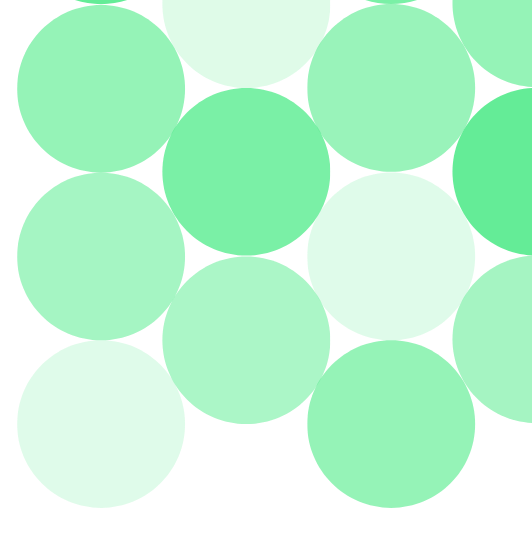Testing
Different ways to assess
CLDN18.2 status
A number of assays, antibodies, and platforms are
available for the assessment of CLDN18.2 expression.
Select assays and antibodies include the VENTANA
CLDN18 (43-14A) Class I IVD Assay, the LSBio
PathPlus™ CLDN18 Antibody, and the Novus
Biologicals Claudin-18 Antibody. Options for
platforms can include BenchMark ULTRA, Dako
Autostainer, and Leica Bond.4
The list of antibodies/assays and platforms is not
exhaustive and the tests mentioned above are not
FDA-approved companion diagnostics. Please use
the appropriate test to guide in clinical decision-
making.
Select appropriate controls
Appropriate controls are essential for the detection of
CLDN18.2 in G/GEJ tumor samples. Here are some
key points on their selection and use.2,5
Validation controls
CAP guidelines recommend that laboratories validate
and/or verify immunohistochemical tests before
placing them into clinical service and should include
positive, negative, and borderline tissue, reflecting
the intended use of the assay.5
Run controls‡
-
It is recommended to use optimal run controls
including positives and negatives2
-
Gastric intestinal metaplasia tissue is an example
of an appropriate positive and negative control as
it demonstrates2:
-
Strong membranous staining in normal gastric
epithelial cells
-
Weak-to-moderate membranous staining of
epithelial cells in areas of metaplasia
-
Absence of staining in lamina propria,
lymphocytes, smooth muscle, blood vessels,
and peripheral nerve
-
If the positive controls fail to demonstrate positive
staining, results of the test specimen should be
considered invalid2
-
Known positive tissue controls should be utilized
only for monitoring performance of reagents and
instruments, not as an aid in determining specific
diagnosis of test samples2
Confidence in concordance
In a study to assess the reproducibility and
comparability of three CLDN18 antibodies and IHC
staining platforms across a cohort of 27 global
laboratories4,*,†:
-
Analytical performance (accuracy, sensitivity, and
specificity) of the VENTANA CLDN18 (43-14A) Class
I IVD Assay was ≥95% and reproducible across the
27 laboratories vs consensus reference results4
-
Analytical performance was equivalent to the
VENTANA (43-14A) Class I IVD Assay for the LSBio
antibody when stained on the Dako or Leica
platform, but not on the VENTANA platform4
-
Staining was reproducible for the LSBio on any
platform across the 27 laboratories that
participated in the study4
-
Performance was least consistent for the Novus
antibody compared to the VENTANA CLDN18
(43-14A) Class I IVD Assay4
*
Antibodies in the study comprised the VENTANA CLDN18 (43-14A) Class I IVD
Assay from Roche Tissue Diagnostics, the PathPlus™ CLDN18 Antibody from
LSBio, and the Claudin-18 Antibody from Novus Biologicals. Platforms
comprised BenchMark ULTRA, Dako Autostainer, and Leica Bond.4
†
Consensus reference scores from all antibodies for each sample were
determined by central pathology review. CLDN18.2 positivity was defined with a
threshold of ≥75% of tumor cells expressing membranous CLDN18 with
moderate-to-strong (≥2+) staining intensity. Accordingly, participating
pathologists were required to submit a binary positive/negative call as well as
an estimation of the percent of cells stained. Laboratory-submitted IHC scores
were compared to the reference consensus score and considered discordant if
the positive/negative binary result differed. Statistical analysis was performed
for comparison and an acceptance criteria of 85% (≥0.85) was applied.4
CAP PPMPT, College of American Pathologists Preanalytics for Precision
Medicine Project Team; CLDN, claudin; CLDN18.1, claudin 18 isoform 1; CLDN18.2,
claudin 18 isoform 2; FDA, US Food and Drug Administration; G/GEJ, gastric/
gastroesophageal junction; IHC, immunohistochemistry; IVD, in vitro diagnostic.
Select appropriate controls
Appropriate controls are essential for the detection of
CLDN18.2 in G/GEJ tumor samples. Here are some
key points on their selection and use.2,5
Validation controls
CAP guidelines recommend that laboratories validate
and/or verify immunohistochemical tests before
placing them into clinical service and should include
positive, negative, and borderline tissue, reflecting
the intended use of the assay.5
Run controls‡
-
It is recommended to use optimal run controls
including positives and negatives2
-
Gastric intestinal metaplasia tissue is an example
of an appropriate positive and negative control as
it demonstrates2:
-
Strong membranous staining in normal gastric
epithelial cells
-
Weak-to-moderate membranous staining of
epithelial cells in areas of metaplasia
-
Absence of staining in lamina propria,
lymphocytes, smooth muscle, blood vessels,
and peripheral nerve
-
If the positive controls fail to demonstrate positive
staining, results of the test specimen should be
considered invalid2
-
Known positive tissue controls should be utilized
only for monitoring performance of reagents and
instruments, not as an aid in determining specific
diagnosis of test samples2


